
- Index
- Artist
- Brand
- Advan Black (122)
- Aquazzura (79)
- Busse Combat (36)
- Clase Azul (64)
- Don Julio (112)
- Don Julio Tequila (25)
- Fender (25)
- Harley-davidson (125)
- Ibanez (58)
- Jeffery West (24)
- Jose Cuervo (259)
- Jose Quervo (70)
- Ludwig (161)
- Patagonia (26)
- Patron (78)
- Patron Tequila (27)
- Sailor (77)
- Seiko (25)
- Tesla (283)
- 1800 (90)
- ... (3996)
- Framing
- Marca
- Signed By
- Size
Vtg Suaza Tequila Drink Recipe Book Cocktail Ink Stamp Zaragoza Choahuila Mexico
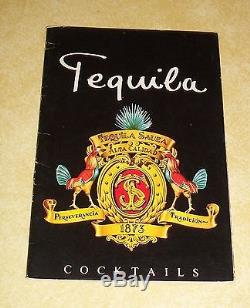
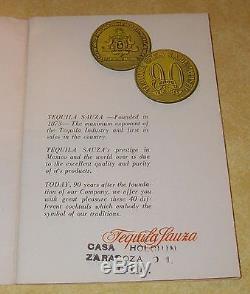
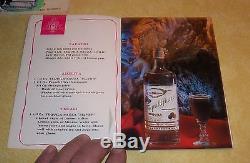

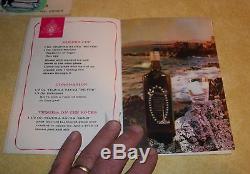
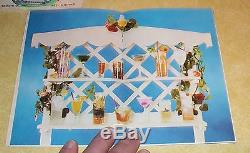
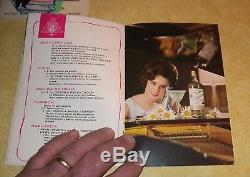

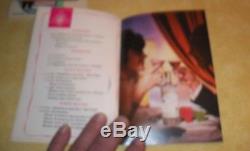

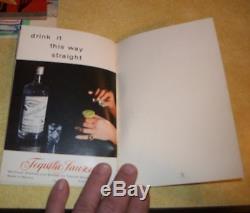



"TEQUILA COCKTAILS" by TEQUILLA SUAZA ALTA CALIDAD PERSEVERANCIA TRADICION 1873 28 page TRADE SOFTCOVER PAMPHLET 5" x 7" STAPLE BINDING GOOD CONDITION SCARCE EMPHEMERA INK STAMPED BY THE VENDOR CASA HOLGUIN ZARAGOZA, O. MADE IN MEXICO PRINTED IN MEXICO SOME RECIPES INLCUDE: TAPATIO ADELITA TECALI JARANA JOHNNY SCAR FACE GOLDEN CUP CORONATION BERTHA SHAMROCK PETROLEO CUBA MARTINI PLANTERS PUNCH FIZZ T. VTG SUAZA TEQUILA DRINK RECIPE BOOK COCKTAIL INK STAMP ZARAGOZA CHOAHUILA MEXICO. We welcome any comments, questions, or concerns. WE ARE TARGETING A GLOBAL MARKET PLACE.
Thanks in advance for your patronage. Please Be sure to add WDG to your.
NOW FOR YOUR VIEWING PLEASURE. "TEQUILA COCKTAILS" by TEQUILLA SUAZA ALTA CALIDAD PERSEVERANCIA TRADICION 1873.
INK STAMPED BY THE VENDOR. SOME RECIPES INLCUDE: TAPATIO ADELITA TECALI JARANA JOHNNY SCAR FACE GOLDEN CUP CORONATION BERTHA SHAMROCK PETROLEO CUBA MARTINI PLANTERS PUNCH FIZZ T.
Tequila is a regional specific name for a distilled beverage made from the blue agave plant, primarily in the area surrounding the city of Tequila, 65 km (40 mi) northwest of Guadalajara, and in the highlands (Los Altos) of the north western Mexican state of Jalisco. Although tequila is a kind of mezcal, modern tequila differs somewhat in the method of its production, in the use of only blue agave plants, as well as in its regional specificity. The red volcanic soil in the surrounding region is particularly well suited to the growing of the blue agave, and more than 300 million of the plants are harvested there each year.Agave tequila grows differently depending on the region. Blue agaves grown in the highlands Los Altos region are larger in size and sweeter in aroma and taste. Agaves harvested in the lowlands, on the other hand, have a more herbaceous fragrance and flavor. Mexican laws state that tequila can only be produced in the state of Jalisco and limited municipalities in the states of Guanajuato, Michoacán, Nayarit, and Tamaulipas. Tequila is recognized as a Mexican designation of origin product in more than 40 countries.
It is protected through NAFTA in Canada and the United States, through bilateral agreements with individual countries such as Japan and Israel, and has been a protected designation of origin product in the constituent countries of the European Union since 1997. Tequila is most often made at a 3840% alcohol content 7680 U. Proof, but can be produced between 31 and 55% alcohol content 62 and 110 U. Tequila was first produced in the 16th century near the location of the city of Tequila, which was not officially established until 1666.
The Aztec people had previously made a fermented beverage from the agave plant, long before theish arrived in 1521. When theish conquistadors ran out of their own brandy, they began to distill agave to produce one of North America's first indigenous distilled spirits. Some 80 years later, around 1600, Don Pedro Sánchez de Tagle, the Marquis of Altamira, began mass-producing tequila at the first factory in the territory of modern-day Jalisco. Spain's King Carlos IV granted the Cuervo family the first license to commercially make tequila. Don Cenobio Sauza, founder of Sauza Tequila and Municipal President of the Village of Tequila from 18841885, was the first to export tequila to the United States, and shortened the name from "Tequila Extract" to just "Tequila" for the American markets.
Don Cenobio's grandson Don Francisco Javier gained international attention for insisting that there cannot be tequila where there are no agaves! His efforts led to the practice that real tequila can come only from the State of Jalisco. Recent history A tahona, large stone wheel, at the Hacienda Doña Engracia that was used to crush the piña.Large, modern distilleries commonly complete this process mechanically. A new Norma Oficial Mexicana (NOM) for tequila (NOM-006-SCFI-2005) was issued in 2006, and among other changes, introduced a category of tequila called extra añejo or "ultra-aged" which must be aged a minimum of three years. Although some tequilas have remained as family-owned brands, most well-known tequila brands are owned by large multinational corporations. However, over 100 distilleries make over 900 brands of tequila in Mexico and over 2,000 brand names have been registered (2009 statistics).
Due to this, each bottle of tequila contains a serial number (NOM) depicting in which distillery the tequila was produced. Because only so many distilleries are used, multiple brands of tequila come from the same location. The Tequila Regulatory Council of Mexico originally did not permit flavored tequila to carry the tequila name. In 2004, the Council decided to allow flavored tequila to be called tequila, with the exception of 100% agave tequila, which still cannot be flavored. The bottle which contained the tequila was a two-kilo display of platinum and gold.
In 2003, Mexico issued a proposal that would require all Mexican-made tequila be bottled in Mexico before being exported to other countries. The Mexican government said that bottling tequila in Mexico would guarantee its quality.Liquor companies in the United States said Mexico just wanted to create bottling jobs in their own country, and also claimed this rule would violate international trade agreements and was in discord with usual exporting practices worldwide. The proposal might have resulted in the loss of jobs at plants in California, Arkansas, Missouri, and Kentucky, because Mexican tequila exported in bulk to the United States is bottled in those plants. On January 17, 2006, the United States and Mexico signed an agreement allowing the continued bulk import of tequila into the United States. The agreement also created a "tequila bottlers registry" to identify approved bottlers of tequila and created an agency to monitor the registry. In June 2013, the ban on importation of premium (100% blue agave) tequila into China was lifted following a state visit to Mexico by President Xi Jinping.
The entry of premium tequila into the country is expected to increase tequila exports by 20 percent within a decade (exports totaled 170 million litres in 2013). On 30 August 2013, the first 70,380 bottles of premium tequila from ten brands arrived in Shanghai.
The arrival happened during an event held at the House of Roosevelt, a well-known club located on The Bund an area with a long tradition of importing alcoholic beverages in China. Production Planting, tending, and harvesting the agave plant remains a manual effort, largely unchanged by modern farm machinery and relying on centuries-old know-how. The men who harvest it, the jimadores [ximaðoes], have intimate knowledge of how the plants should be cultivated, passed down from generation to generation. "Tequila worm" misconception It is a common misconception that some tequilas contain a'worm' in the bottle.
The worm is actually the larval form of the moth Hypopta agavis, which lives on the agave plant. Finding one in the plant during processing indicates an infestation and, correspondingly, a lower-quality product. However, this misconception continues, despite effort and marketing to represent tequila as a premium liquorsimilar to the way Cognac is viewed in relation to other brandies.
Serving In Mexico, the most traditional way to drink tequila is neat, without lime and salt. It is popular in some regions to drink fine tequila with a side of sangritaa sweet, sour, and spicy drink typically made from orange juice, grenadine (or tomato juice), and hot chiles. Equal-sized shots of tequila and sangrita are sipped alternately, without salt or lime.Another popular drink in Mexico is the bandera (flag, inish), named after the Flag of Mexico, it consists of three shot glasses, filled with lime juice (for the green), white tequila, and sangrita (for the red). Outside Mexico, a single shot of tequila is often served with salt and a slice of lime. This is called tequila cruda and is sometimes referred to as "training wheels", "lick-sip-suck", or "lick-shoot-suck" (referring to the way in which the combination of ingredients is imbibed). The drinkers moisten the back of their hands below the index finger (usually by licking) and pour on the salt.
Then the salt is licked off the hand, the tequila is drunk, and the fruit slice is quickly bitten. Groups of drinkers often do this simultaneously. Drinking tequila in this way is often erroneously called a Tequila Slammer, [34] which is in fact a mix of tequila and carbonated drink. Though the traditional Mexican shot is tequila by itself, lime is the fruit of choice when a chaser must be used.
The salt is believed to lessen the "burn" of the tequila and the sour fruit balances and enhances the flavor. In Germany and some other countries, tequila oro (gold) is often consumed with cinnamon on a slice of orange after, while tequila blanco (white) is consumed with salt and lime. Finally, as with other popular liquors, a number of shot-related drinking games and "stunt" drinks are used, such as body shots. If the bottle of tequila does not state on the label that it is manufactured from 100% blue agave (no sugars added), then, by default, that tequila is a mixto (manufactured from 51% blue agave).
Some tequila distilleries label their tequila as "made with blue agave" or made from blue agave. " However, the Tequila Regulatory Council has stated only tequilas distilled with 100% agave can be designated as "100% agave. Some distillers of lower-quality tequila have marketed their product to be served "ice-cold chilled" when used as a shot. Chilling any alcohol can be used to reduce the smell or flavors associated with a lower-quality product.
Any alcoholic product, when served as a chilled shot, may be more palatable to the consumer. Many of the higher-quality, 100% agave tequilas do not impart significant alcohol burn, [citation needed] and drinking them with salt and lime is likely to remove much of the flavor. These tequilas are usually sipped from a snifter glass rather than a shot glass, and savoured instead of quickly gulped. Doing so allows the taster to detect subtler fragrances and flavors that would otherwise be missed.
Tequila glasses When served neat (without any additional ingredients), tequila is most often served in a narrow shot glass called a caballito (little horse, inish), but can often be found in anything from a snifter to a tumbler. The Consejo Regulador del Tequila approved an "official tequila glass" in 2002 called the Ouverture Tequila glass, made by Riedel. The margarita glass, frequently rimmed with salt or sugar, is a staple for the entire genre of tequila-based mixed drinks, including the margarita.
Cocktails A variety of cocktails are made with tequila, including the margarita, a cocktail that helped make tequila popular in the United States. The traditional margarita uses tequila, Cointreau, and lime juice, though many variations exist. A popular cocktail in Mexico is the Paloma.Also, a number of martini variants involve tequila, and a large number of tequila drinks are made by adding fruit juice. These include the Tequila Sunrise and the Matador. Sodas and other carbonated drinks are a common mixer, as in the Tequila Slammer. Other uses In 2008, Mexican scientists discovered a method to produce tiny, nanometer-sized synthetic diamonds from 80-proof (40% alcohol) tequila, which has the optimal range of water to ethanol for producing synthetic diamonds. This process involves heating the tequila to over 800 °C (1,400 °F) to break its molecular structure and be vaporized into gaseous hydrogen, carbon, and various simple molecules.
The carbon molecules are then settled upon steel or silicon trays to form a thin and pure uniform layer. Extremely cheap to produce and far too small for jewels, the results are hoped to have numerous commercial and industrial applications such as in computer chips or cutting instruments. DO NOT BE TOO PERSNICKETY. Please leave feedback when you have received the item and are satisfied. Our goal is for 5-star service.
We want you to be a satisfied, return customer. Please express any concerns or questions. More pictures are available upon request. Please Check out our other items. WE like the curious and odd.
Get Supersized Images & Free Image Hosting. Create your brand with Auctiva's. The item "VTG SUAZA TEQUILA DRINK RECIPE BOOK COCKTAIL INK STAMP ZARAGOZA CHOAHUILA MEXICO" is in sale since Thursday, September 07, 2017. This item is in the category "Collectibles\Advertising\Food & Beverage\Distillery\Other Distillery Ads". The seller is "cbenhob" and is located in Jenks, Oklahoma. This item can be shipped worldwide.- Brand: SUAZA
- Original/Reproduction: Original
- Type of Advertising: Recipe Book
- Date of Creation: 1960s
- Country/Region of Manufacture: Mexico

